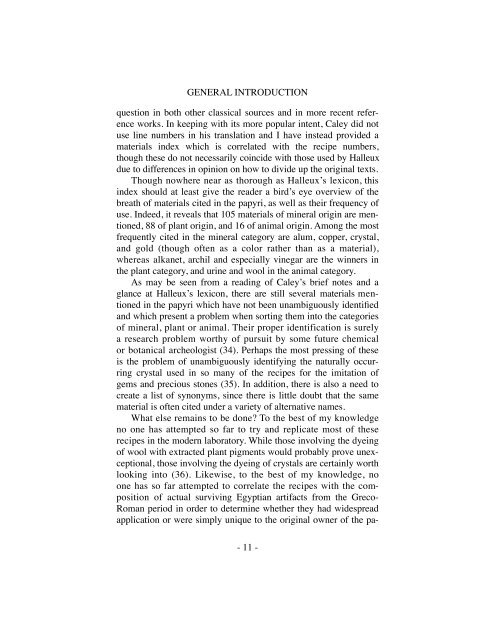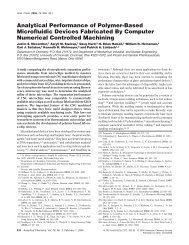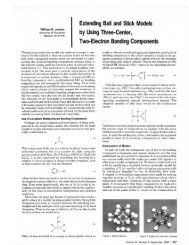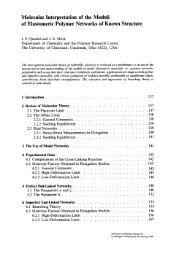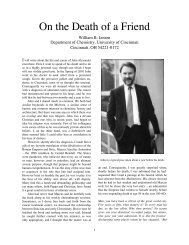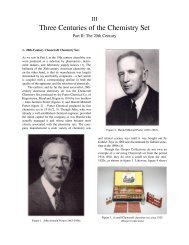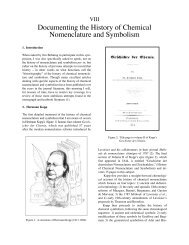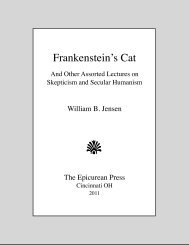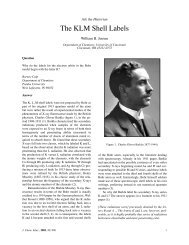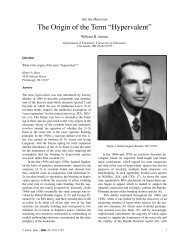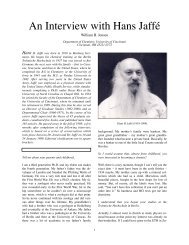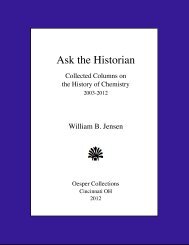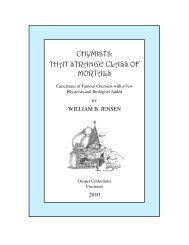The Leyden and Stockholm Papyri - University of Cincinnati
The Leyden and Stockholm Papyri - University of Cincinnati
The Leyden and Stockholm Papyri - University of Cincinnati
You also want an ePaper? Increase the reach of your titles
YUMPU automatically turns print PDFs into web optimized ePapers that Google loves.
GENERAL INTRODUCTION<br />
question in both other classical sources <strong>and</strong> in more recent reference<br />
works. In keeping with its more popular intent, Caley did not<br />
use line numbers in his translation <strong>and</strong> I have instead provided a<br />
materials index which is correlated with the recipe numbers,<br />
though these do not necessarily coincide with those used by Halleux<br />
due to differences in opinion on how to divide up the original texts.<br />
! Though nowhere near as thorough as Halleux’s lexicon, this<br />
index should at least give the reader a bird’s eye overview <strong>of</strong> the<br />
breath <strong>of</strong> materials cited in the papyri, as well as their frequency <strong>of</strong><br />
use. Indeed, it reveals that 105 materials <strong>of</strong> mineral origin are mentioned,<br />
88 <strong>of</strong> plant origin, <strong>and</strong> 16 <strong>of</strong> animal origin. Among the most<br />
frequently cited in the mineral category are alum, copper, crystal,<br />
<strong>and</strong> gold (though <strong>of</strong>ten as a color rather than as a material),<br />
whereas alkanet, archil <strong>and</strong> especially vinegar are the winners in<br />
the plant category, <strong>and</strong> urine <strong>and</strong> wool in the animal category.<br />
! As may be seen from a reading <strong>of</strong> Caley’s brief notes <strong>and</strong> a<br />
glance at Halleux’s lexicon, there are still several materials mentioned<br />
in the papyri which have not been unambiguously identified<br />
<strong>and</strong> which present a problem when sorting them into the categories<br />
<strong>of</strong> mineral, plant or animal. <strong>The</strong>ir proper identification is surely<br />
a research problem worthy <strong>of</strong> pursuit by some future chemical<br />
or botanical archeologist (34). Perhaps the most pressing <strong>of</strong> these<br />
is the problem <strong>of</strong> unambiguously identifying the naturally occurring<br />
crystal used in so many <strong>of</strong> the recipes for the imitation <strong>of</strong><br />
gems <strong>and</strong> precious stones (35). In addition, there is also a need to<br />
create a list <strong>of</strong> synonyms, since there is little doubt that the same<br />
material is <strong>of</strong>ten cited under a variety <strong>of</strong> alternative names.<br />
! What else remains to be done? To the best <strong>of</strong> my knowledge<br />
no one has attempted so far to try <strong>and</strong> replicate most <strong>of</strong> these<br />
recipes in the modern laboratory. While those involving the dyeing<br />
<strong>of</strong> wool with extracted plant pigments would probably prove unexceptional,<br />
those involving the dyeing <strong>of</strong> crystals are certainly worth<br />
looking into (36). Likewise, to the best <strong>of</strong> my knowledge, no<br />
one has so far attempted to correlate the recipes with the composition<br />
<strong>of</strong> actual surviving Egyptian artifacts from the Greco-<br />
Roman period in order to determine whether they had widespread<br />
application or were simply unique to the original owner <strong>of</strong> the pa-<br />
- 11 -


